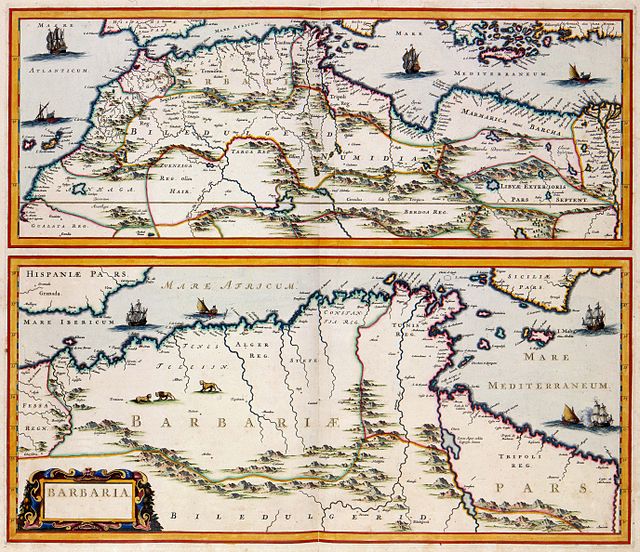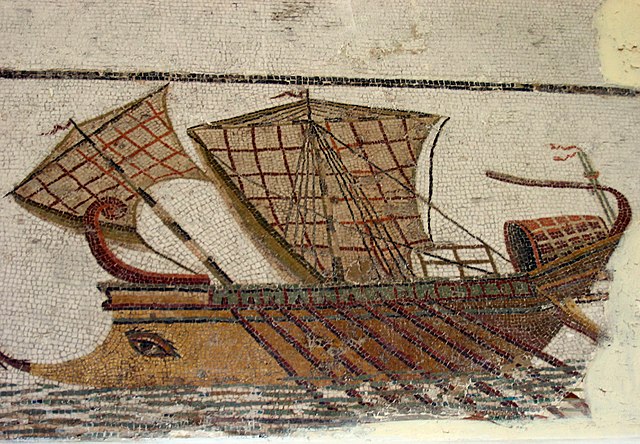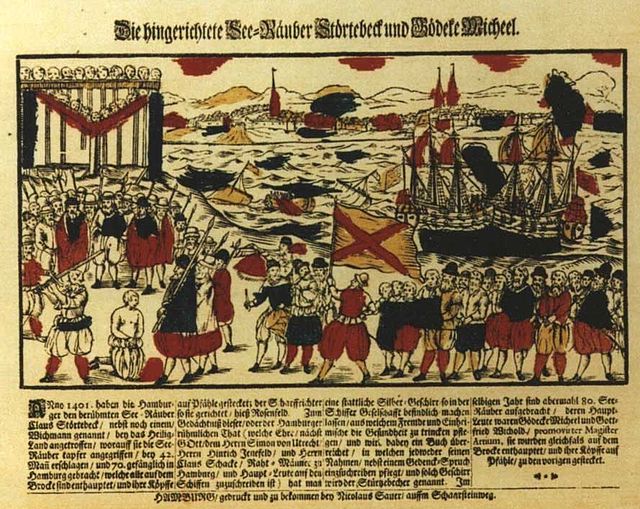The Barbary pirates, Barbary corsairs, or Ottoman corsairs were mainly Muslim pirates and privateers who operated from the Barbary states. This area was known in Europe as the Barbary Coast, in reference to the Berbers. Slaves in Barbary could be of many ethnicities, and of many different religions, such as Christian, Jewish, or Muslim. Their predation extended throughout the Mediterranean, south along West Africa's Atlantic seaboard and into the North Atlantic as far north as Iceland, but they primarily operated in the western Mediterranean. In addition to seizing merchant ships, they engaged in razzias, raids on European coastal towns and villages, mainly in Italy, France, Spain, and Portugal, but also in the British Isles, the Netherlands, and Iceland.
A Sea Fight with Barbary Corsairs by Laureys a Castro, c. 1681
Barbaria by Jan Janssonius, shows the coast of North Africa, an area known in the 17th century as Barbaria, c. 1650
An Algerine pirate ship
A man from the Barbary states
Piracy is an act of robbery or criminal violence by ship or boat-borne attackers upon another ship or a coastal area, typically with the goal of stealing cargo and other valuable goods. Those who conduct acts of piracy are called pirates, and vessels used for piracy are called pirate ships. The earliest documented instances of piracy were in the 14th century BC, when the Sea Peoples, a group of ocean raiders, attacked the ships of the Aegean and Mediterranean civilisations. Narrow channels which funnel shipping into predictable routes have long created opportunities for piracy, as well as for privateering and commerce raiding.
A mosaic of a Roman trireme in Tunisia
A fleet of Vikings, painted mid-12th century
The Vitalienbrüder. Piracy became endemic in the Baltic sea in the Middle Ages because of the Victual Brothers.
"Cossacks of Azov fighting a Turk ship" by Grigory Gagarin








